HAPPY HALLOWEEN!

We are currently experiencing wind storms and fires burning in California.
There is hardly any Halloween decor in my neighborhood today because everything from home front yards that can be blown away by the wind were taken down last week.
I took these photos when the decor was first put up, and I'd like to share my neighbors' front yard Halloween decor.
Pirate's Cove

Arrrgh... if they wants candies they can nah brin' thar weapons inside th' tavern!
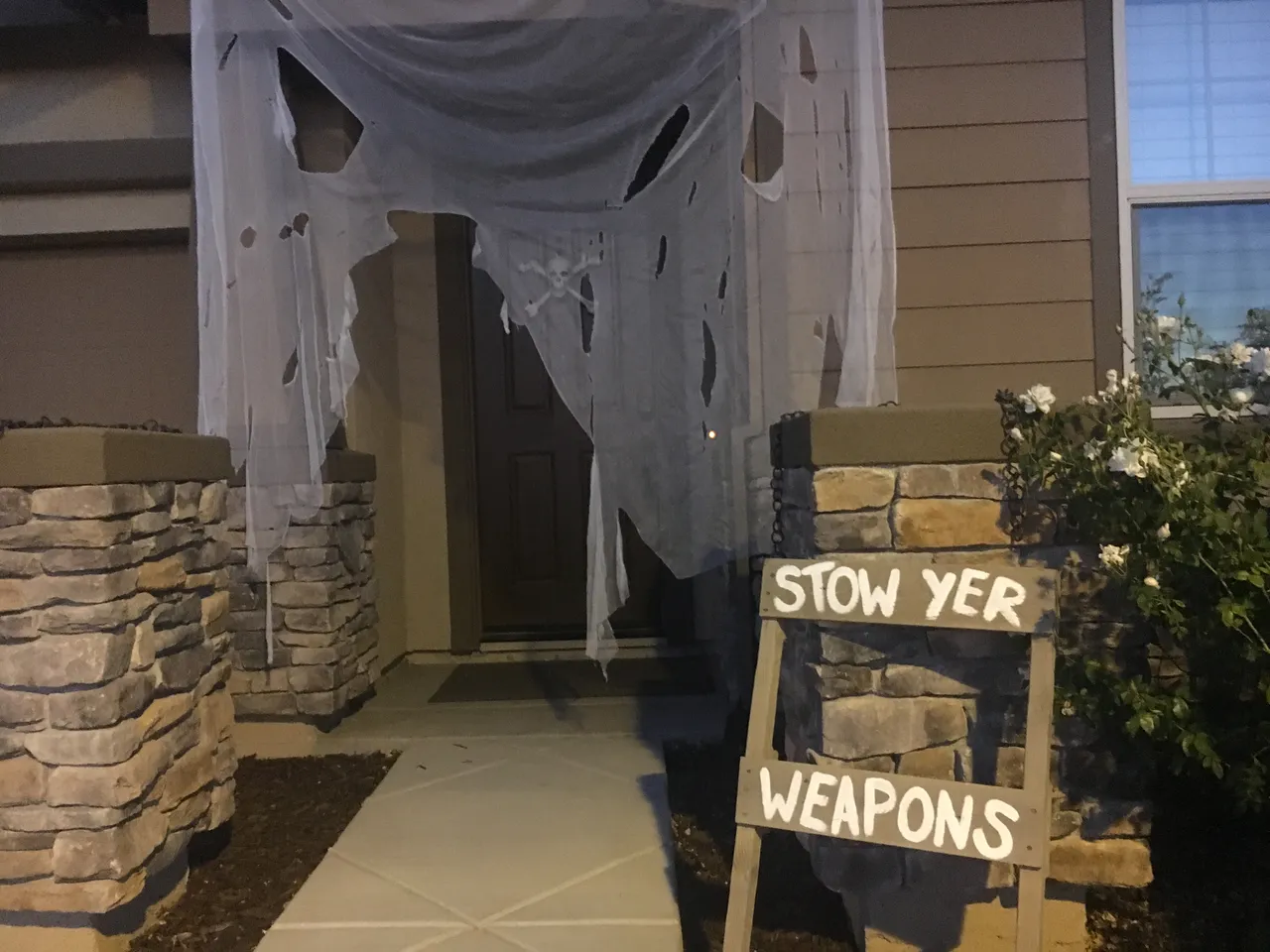
Wha' be inside thar booty box?

This one be drinkin' ale.
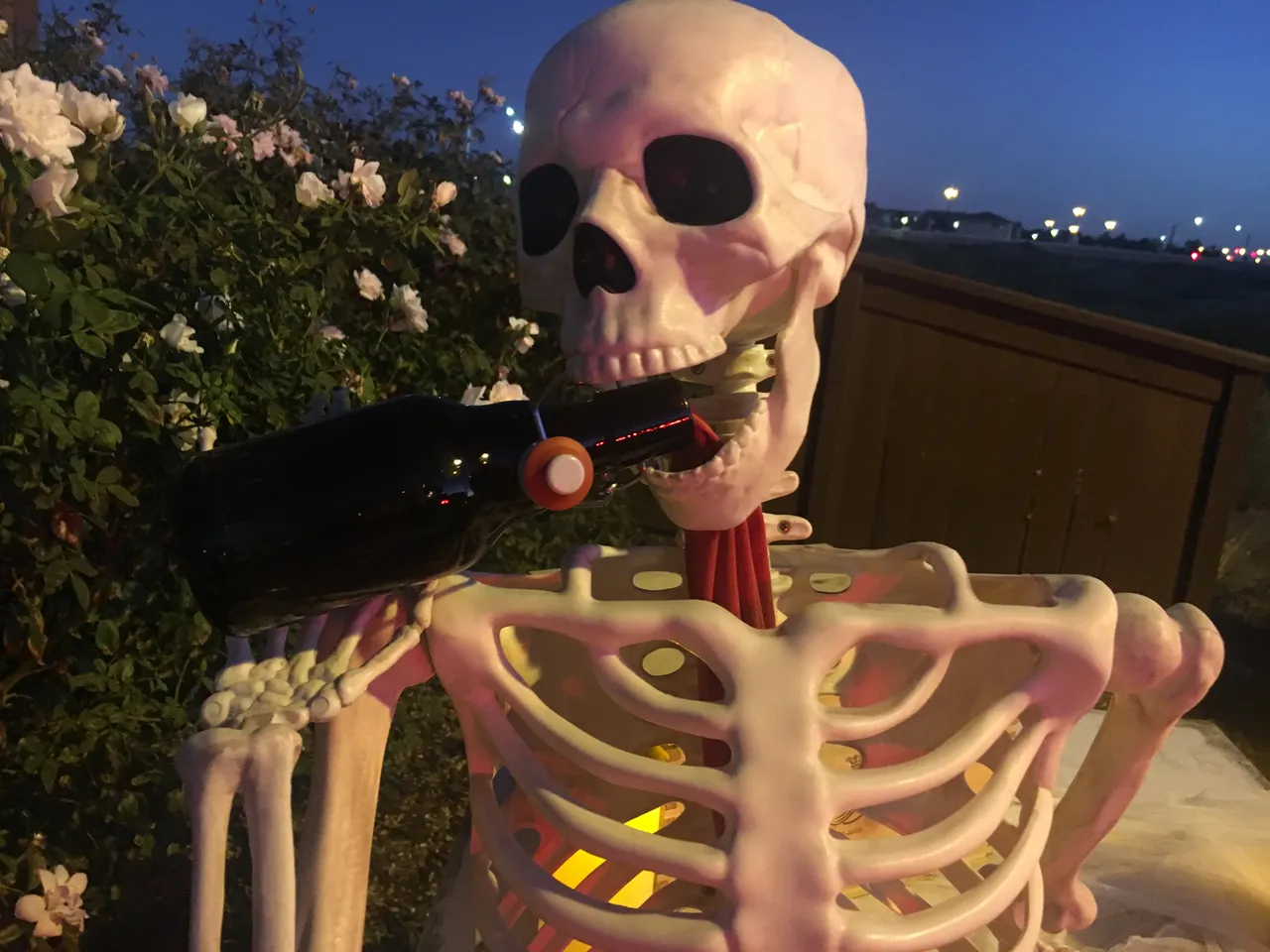
And this pirate be chillin' out.
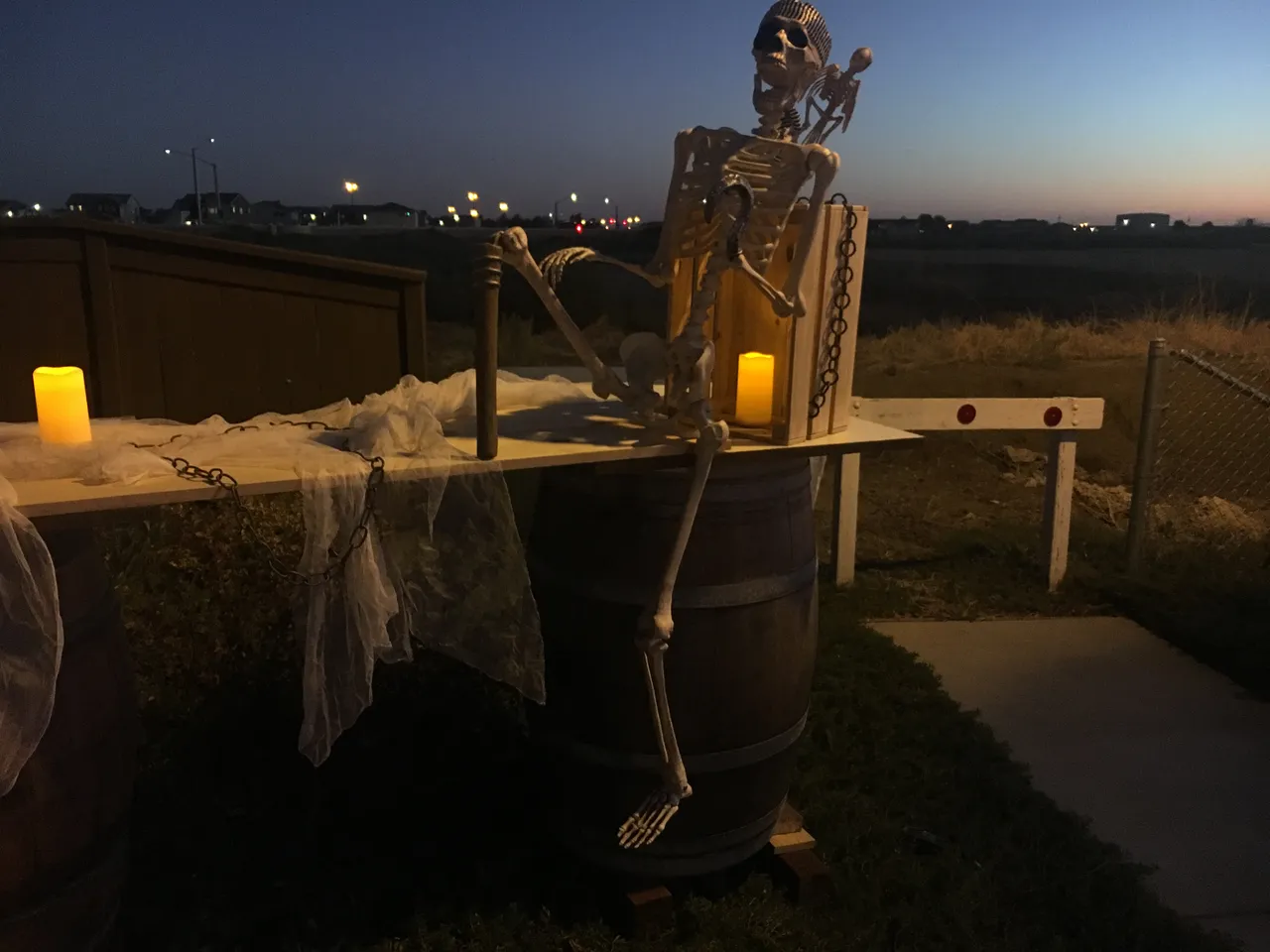

I also took photos of three common scary figures used for Halloween decor.
The first one is a skeleton clown. Why are people afraid of clowns?
Coulrophobia is no laughing matter. This irrational fear of clowns can cause panic and nausea. Although it’s a rare phobia, many people find clowns creepy if not downright scary. Why? The answer lies partly in the prevalence of evil clowns in popular culture—think Pennywise in Stephen King’s It (1986). However, according to researchers, there are actual psychological reasons why we fear clowns.To begin with, a clown’s makeup can be unsettling. It hides not only the person’s identity but also that person’s feelings. Worse, the makeup can result in mixed signals if, for example, the clown has a painted-on smile but is frowning. Then, there’s the uncanny nature of the makeup itself. The oversized lips and eyebrows distort the face so that the brain perceives it as human but slightly off. That oddness is heightened by a clown’s bizarre costume. In addition, clowns are highly unpredictable as well as mischievous, which puts people on edge. Are they going to squirt water at you or give you a flower?Encyclopedia Britannica
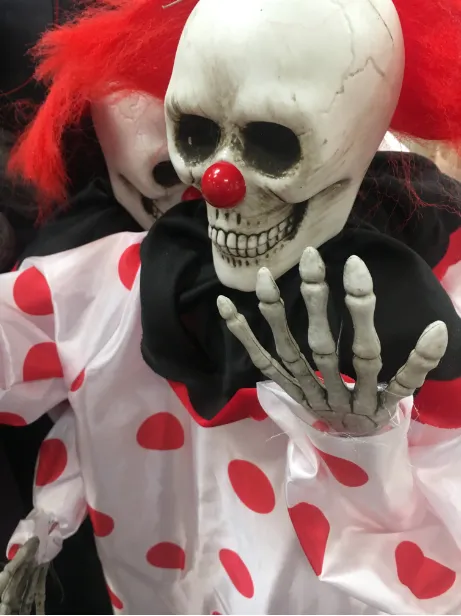
Next is a Jack O'Lantern. Here is some history about this mythical pumpkin.
The Legend of "Stingy Jack" People have been making jack-o’-lanterns at Halloween for centuries. The practice originated from an Irish myth about a man nicknamed “Stingy Jack.” According to the story, Stingy Jack invited the Devil to have a drink with him. True to his name, Stingy Jack didn’t want to pay for his drink, so he convinced the Devil to turn himself into a coin that Jack could use to buy their drinks. Once the Devil did so, Jack decided to keep the money and put it into his pocket next to a silver cross, which prevented the Devil from changing back into his original form.Jack eventually freed the Devil, under the condition that he would not bother Jack for one year and that, should Jack die, he would not claim his soul. The next year, Jack again tricked the Devil into climbing into a tree to pick a piece of fruit. While he was up in the tree, Jack carved a sign of the cross into the tree’s bark so that the Devil could not come down until the Devil promised Jack not to bother him for ten more years.
Soon after, Jack died. As the legend goes, God would not allow such an unsavory figure into heaven. The Devil, upset by the trick Jack had played on him and keeping his word not to claim his soul, would not allow Jack into hell. He sent Jack off into the dark night with only a burning coal to light his way. Jack put the coal into a carved-out turnip and has been roaming the Earth with ever since. The Irish began to refer to this ghostly figure as “Jack of the Lantern,” and then, simply “Jack O’Lantern.” History.com
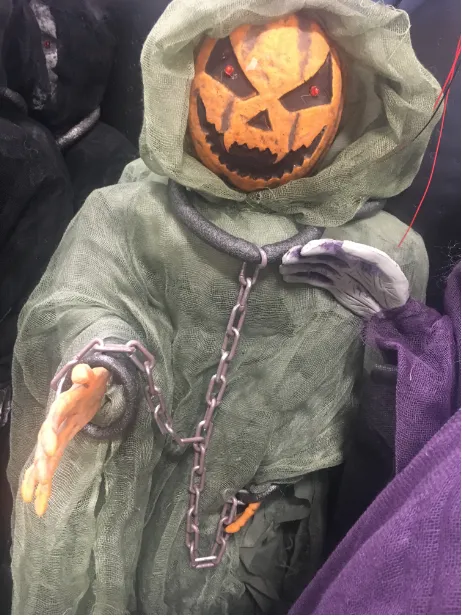
And now... the history of witches!
The Origin of Witches Early witches were people who practiced witchcraft, using magic spells and calling upon spirits for help or to bring about change. Most witches were thought to be pagans doing the Devil’s work. Many, however, were simply natural healers or so-called “wise women” whose choice of profession was misunderstood.It’s unclear exactly when witches came on the historical scene, but one of the earliest records of a witch is in the Bible in the book of 1 Samuel, thought be written between 931 B.C. and 721 B.C. It tells the story of when King Saul sought the Witch of Endor to summon the dead prophet Samuel’s spirit to help him defeat the Philistine army.
The witch roused Samuel, who then prophesied the death of Saul and his sons. The next day, according to the Bible, Saul’s sons died in battle, and Saul committed suicide.
Other Old Testament verses condemn witches, such as the oft-cited Exodus 22:18, which says, “thou shalt not suffer a witch to live.” Additional Biblical passages caution against divination, chanting or using witches to contact the dead.
'Malleus Maleficarum'
Witch hysteria really took hold in Europe during the mid-1400s, when many accused witches confessed, often under torture, to a variety of wicked behaviors. Within a century, witch hunts were common and most of the accused were executed by burning at the stake or hanging. Single women, widows and other women on the margins of society were especially targeted.Between the years 1500 and 1660, up to 80,000 suspected witches were put to death in Europe. Around 80 percent of them were women thought to be in cahoots with the Devil and filled with lust. Germany had the highest witchcraft execution rate, while Ireland had the lowest.
The publication of “Malleus Maleficarum”—written by two well-respected German Dominicans in 1486—likely spurred witch mania to go viral. The book, usually translated as “The Hammer of Witches,” was essentially a guide on how to identify, hunt and interrogate witches. History.com
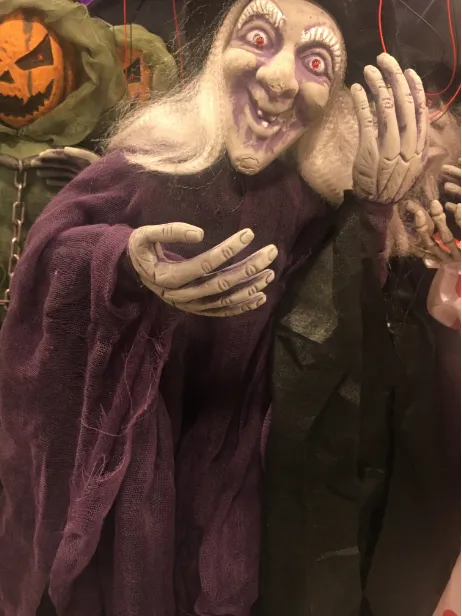
And finally...
The zombie, often portrayed as an undead, flesh-eating, decaying corpse, has enjoyed a popularity surge in recent years. Whether they’re devouring their prey in The Walking Dead or getting their groove on in Michael Jackson’s “Thriller” video, zombies dominate pop culture. But are zombies real? Unlike many other monsters—which are mostly a product of superstition, religion and fear— zombies have a basis in fact, and several verified cases of zombies have been reported from Haitian voodoo culture.Zombie Traits
A zombie, according to pop culture and folklore, is usually either a reawakened corpse with a ravenous appetite or someone bitten by another zombie infected with a “zombie virus.”Zombies are usually portrayed as strong but robotic beings with rotting flesh. Their only mission is to feed. They typically don’t have conversations (although some may grunt a little).
Origin of Zombies
The Ancient Greeks may have been the first civilization terrorized by a fear of the undead. Archaeologists have unearthed many ancient graves which contained skeletons pinned down by rocks and other heavy objects, assumedly to prevent the dead bodies from reanimating.Zombie folklore has been around for centuries in Haiti, possibly originating in the 17th century when West African slaves were brought in to work on Haiti’s sugar cane plantations. Brutal conditions left the slaves longing for freedom. According to some reports, the life—or rather afterlife—of a zombie represented the horrific plight of slavery. History.com
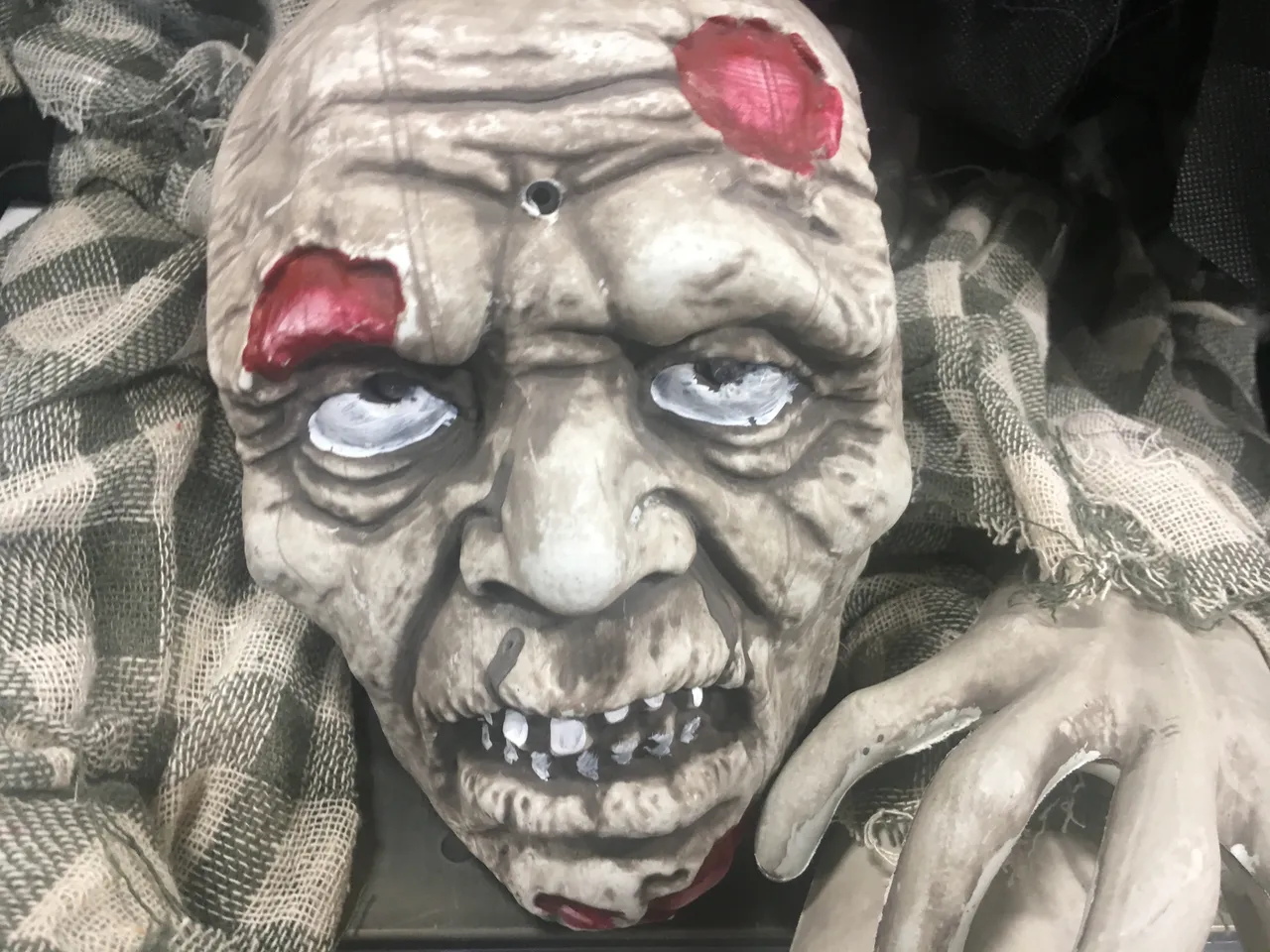
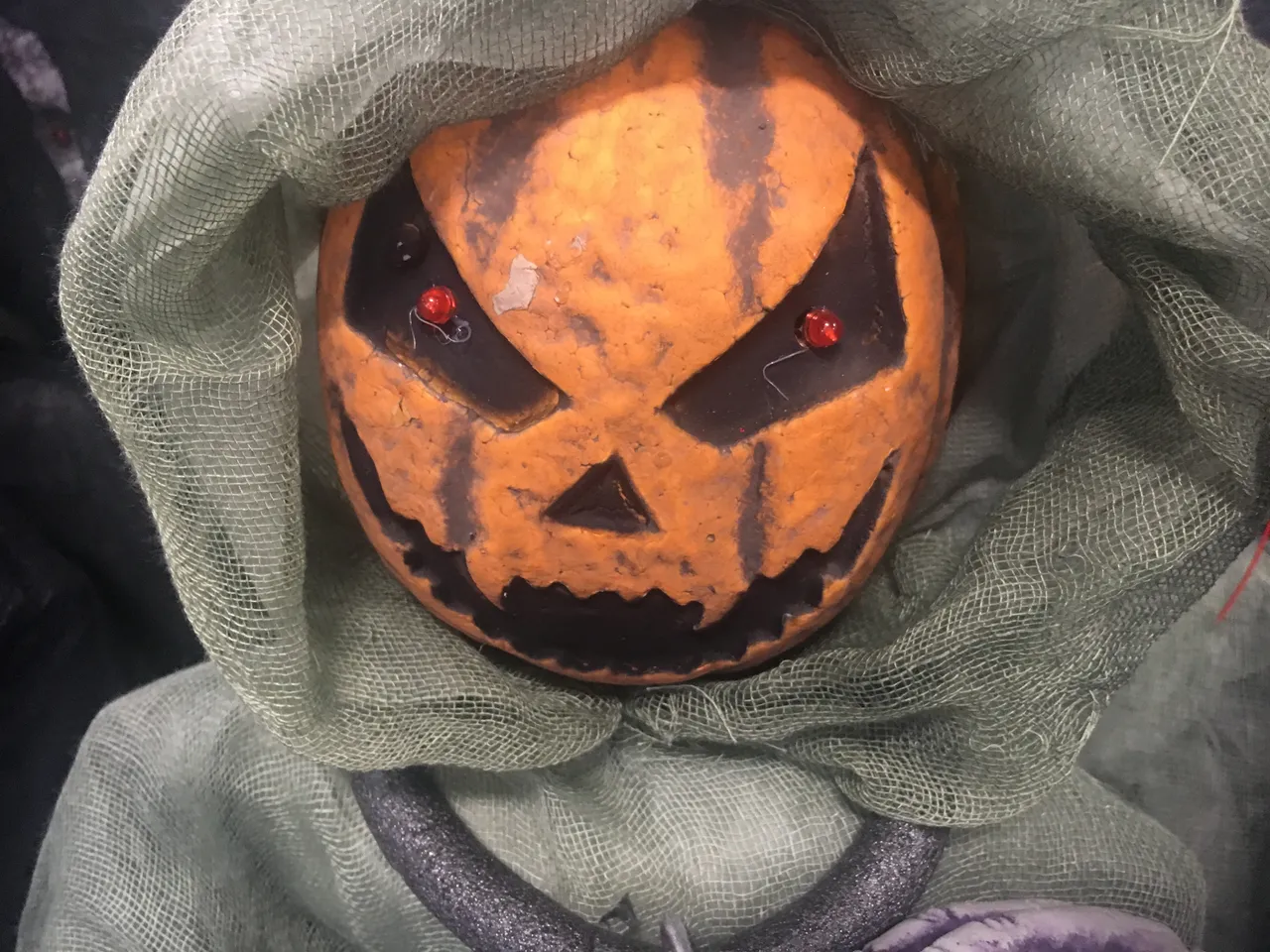
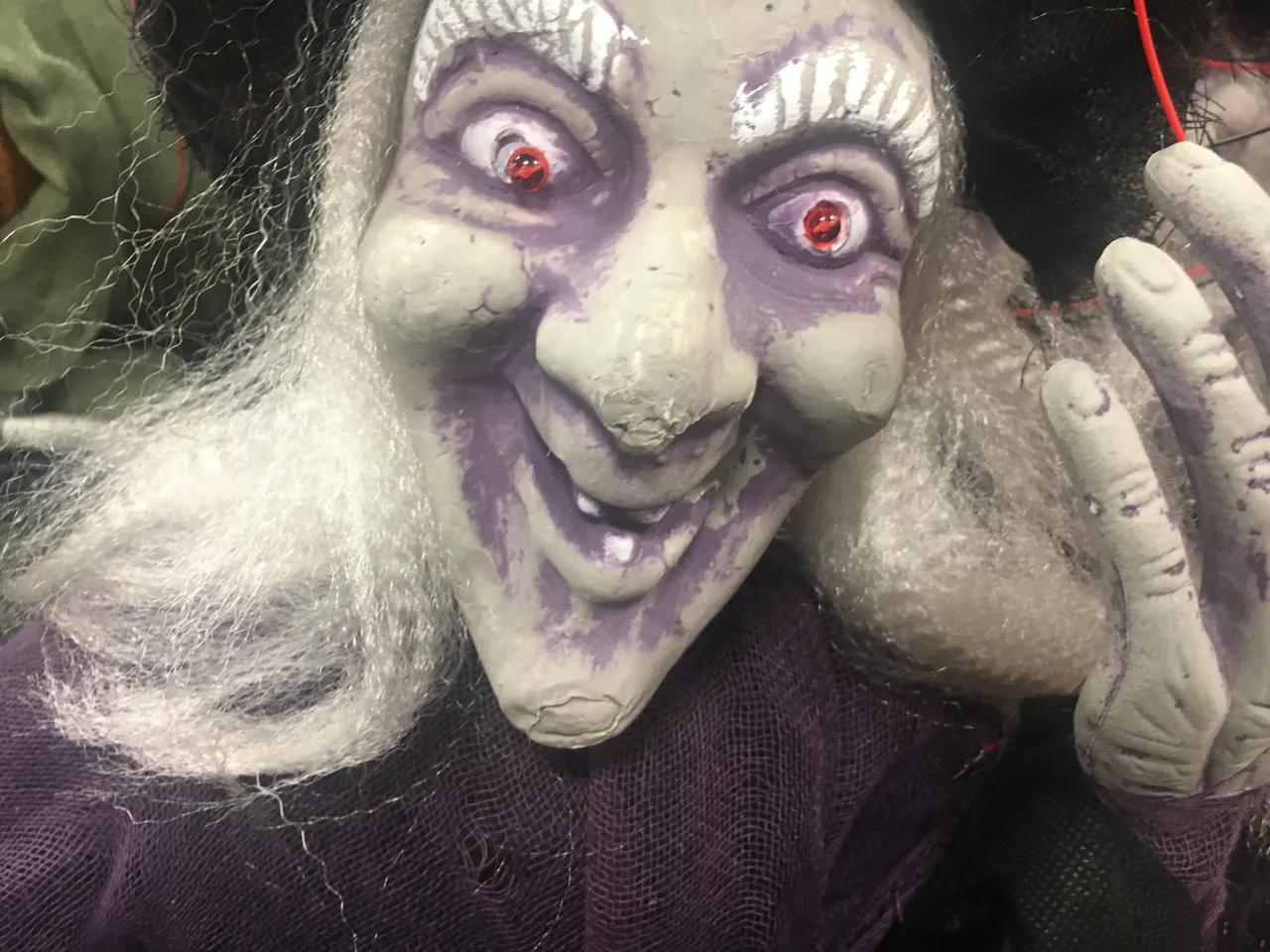
I am going as The Dark Enchantress today, so let me try on some witches hats!


Enjoy your celebrations this Halloween Day!
